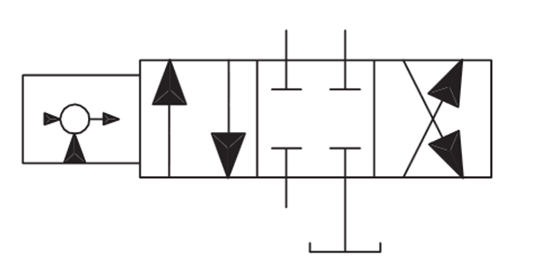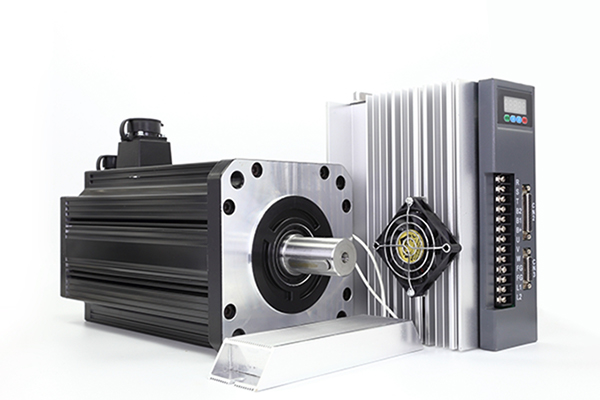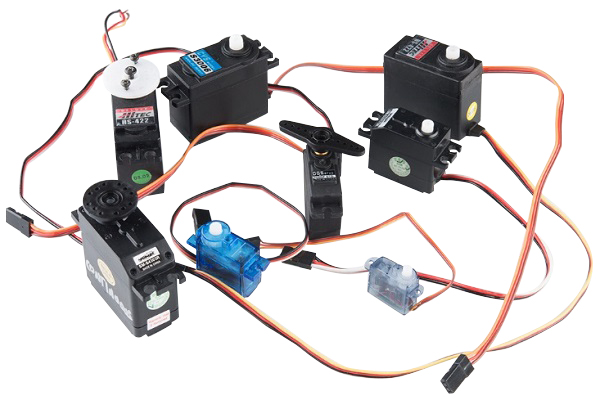Servo and Proportional Valve: How to Operate?
Introduction
Servo and proportional valves are used to precisely control the position or speed of an actuator. The valves are different internally but perform the same function. A servo valve normally utilizes an internal mechanical feedback device. Proportional valves usually have an electrical feedback, commonly called an LVDT.
Both valves operate from a variable DC signal. The command voltage input into the valve amplifier is usually + or -10 volts. The amplifier then converts the voltage into a current signal to drive the valve. Normally a positive voltage will shift the valve spool into the “A” position, a negative voltage will shift the valve spool into the “B” position. The valve spool shifts directly proportional to the strength of the command voltage.
Servo Valve Operation
Before operating the servo valve, the following preparations must be made:

Connection lines
Before operating the servo valve, connect the servo valve to the control system. The specific steps are as follows:
After connecting the lines, you can turn on the power supply of the servo valve. The specific steps are as follows:
After turning on the power, adjust the servo position of the servo valve. The specific steps are as follows:
Turn on the power and start the control computer.
Before operating the proportional valve, you need to turn on the power and start the control computer. Make sure the control computer is in working order so that it can control the proportional valve correctly.
Set the desired target location.
On the control computer, set the desired target position through input or touch screen. Make sure the target position is compatible with the rated range of the proportional valve to avoid overload operation.
Adjust the amplifier of the proportional valve.
The amplifier of the proportional valve is a device used to amplify the input signal. By adjusting the amplifier, the output flow of the proportional valve can be changed. On the control computer, appropriate amplifier parameters are selected to ensure that the proportional valve can respond correctly to the input signal.
Adjust the controller of the proportional valve.
The proportional valve controller is a device used to control the opening of the valve port. By adjusting the controller, parameters such as flow and pressure of the proportional valve can be changed. On the control computer, select appropriate controller parameters to ensure that the proportional valve can meet process needs.
Adjust the actuator of the proportional valve.
The actuator of a proportional valve is a device used to drive the movement of the valve core. By adjusting the actuator, the valve opening and flow rate of the proportional valve can be changed. On the control computer, select appropriate actuator parameters to ensure the proportional valve responds correctly to the input signal.
Start the proportional valve and observe its working status.
After setting the target position, amplifier, controller and actuator, you can start the proportional valve and observe its working status. Ensure that parameters such as the output flow and pressure of the proportional valve are consistent with the set values to avoid abnormal situations.
Servo and proportional valves are used to precisely control the position or speed of an actuator. The valves are different internally but perform the same function. A servo valve normally utilizes an internal mechanical feedback device. Proportional valves usually have an electrical feedback, commonly called an LVDT.
Both valves operate from a variable DC signal. The command voltage input into the valve amplifier is usually + or -10 volts. The amplifier then converts the voltage into a current signal to drive the valve. Normally a positive voltage will shift the valve spool into the “A” position, a negative voltage will shift the valve spool into the “B” position. The valve spool shifts directly proportional to the strength of the command voltage.
Servo Valve Operation
Before operating the servo valve, the following preparations must be made:
- Prepare the required tools and materials, such as screwdrivers, wrenches, cleaners, etc.
- Check whether the appearance of the servo valve is intact and there is no damage or leakage.
- Check whether the servo valve interface matches the electric servo system interface and ensure that the connection is normal.

Before operating the servo valve, connect the servo valve to the control system. The specific steps are as follows:
- Connect the power cable and signal cable according to the interface requirements of the control system and servo valve.
- Check whether the connection line is firm and not loose.
- Use electrical testing tools such as multimeters to detect the continuity and insulation of power lines and signal lines.
After connecting the lines, you can turn on the power supply of the servo valve. The specific steps are as follows:
- Turn on the power switch and observe whether the power indicator light is on.
- Confirm whether the power supply voltage is within the specified range. If abnormal, adjust it in time.
- Observe whether there are any abnormal sounds or vibrations in the servo valve, and if so, deal with them in time.
After turning on the power, adjust the servo position of the servo valve. The specific steps are as follows:
- Set the input signal and output signal of the servo valve according to the requirements of the control system.
- Use the operation interface or adjustment knob of the control system to roughly adjust the position of the servo valve.
- Observe whether the actual output of the servo valve matches the set value. If there is an error, fine adjustment is required.
- During the adjustment process, the surrounding environment should be kept clean to avoid dust, debris, etc. from affecting the servo valve.
Turn on the power and start the control computer.
Before operating the proportional valve, you need to turn on the power and start the control computer. Make sure the control computer is in working order so that it can control the proportional valve correctly.
Set the desired target location.

On the control computer, set the desired target position through input or touch screen. Make sure the target position is compatible with the rated range of the proportional valve to avoid overload operation.
Adjust the amplifier of the proportional valve.
The amplifier of the proportional valve is a device used to amplify the input signal. By adjusting the amplifier, the output flow of the proportional valve can be changed. On the control computer, appropriate amplifier parameters are selected to ensure that the proportional valve can respond correctly to the input signal.
Adjust the controller of the proportional valve.
The proportional valve controller is a device used to control the opening of the valve port. By adjusting the controller, parameters such as flow and pressure of the proportional valve can be changed. On the control computer, select appropriate controller parameters to ensure that the proportional valve can meet process needs.
Adjust the actuator of the proportional valve.
The actuator of a proportional valve is a device used to drive the movement of the valve core. By adjusting the actuator, the valve opening and flow rate of the proportional valve can be changed. On the control computer, select appropriate actuator parameters to ensure the proportional valve responds correctly to the input signal.
Start the proportional valve and observe its working status.
After setting the target position, amplifier, controller and actuator, you can start the proportional valve and observe its working status. Ensure that parameters such as the output flow and pressure of the proportional valve are consistent with the set values to avoid abnormal situations.
Post a Comment:
You may also like:

Category
Featured Articles
How to Test Servo Motor?
 Servo motors are devices that convert electrical signals into mechanical motion and are widely used in industrial automation, ...
Servo motors are devices that convert electrical signals into mechanical motion and are widely used in industrial automation, ...
 Servo motors are devices that convert electrical signals into mechanical motion and are widely used in industrial automation, ...
Servo motors are devices that convert electrical signals into mechanical motion and are widely used in industrial automation, ...How to Maintain Servo Motor?
 Servo motors play a crucial role in various industries, serving as precision control devices in applications ranging from ...
Servo motors play a crucial role in various industries, serving as precision control devices in applications ranging from ...
 Servo motors play a crucial role in various industries, serving as precision control devices in applications ranging from ...
Servo motors play a crucial role in various industries, serving as precision control devices in applications ranging from ...What are the Types of Servo Motor?
 There are some special types of application of electrical motor where rotation of the motor is required for just a certain angle ...
There are some special types of application of electrical motor where rotation of the motor is required for just a certain angle ...
 There are some special types of application of electrical motor where rotation of the motor is required for just a certain angle ...
There are some special types of application of electrical motor where rotation of the motor is required for just a certain angle ...How to Select the Suitable Power ...
 It's important to consider the unique demands of a motion control application when selecting a power supply. During ...
It's important to consider the unique demands of a motion control application when selecting a power supply. During ...
 It's important to consider the unique demands of a motion control application when selecting a power supply. During ...
It's important to consider the unique demands of a motion control application when selecting a power supply. During ...What is a Servo Motor?
 There are some special types of application of electrical motor where rotation of the motor is required for just a certain angle ...
There are some special types of application of electrical motor where rotation of the motor is required for just a certain angle ...
 There are some special types of application of electrical motor where rotation of the motor is required for just a certain angle ...
There are some special types of application of electrical motor where rotation of the motor is required for just a certain angle ...